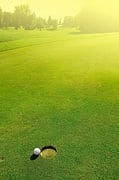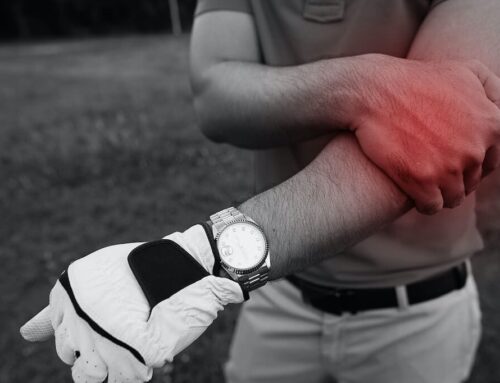
When trying to learn a new skill or movement, the conditions we set for practice are a crucial factor in determining whether or not we will actually learn the skill. I like to define successful learning as the ability to recall that skill when needed in new and different situations. For example, you might be able to stripe ball after ball with your 3 wood off the deck at the driving range, but it isn’t true learning unless it translates to the course when you can pull off that shot just when you need it under varying conditions.
So how do we manipulate the conditions of golf practice to facilitate true learning? The principles of motor learning state that blocked practice (hitting the same club over and over) enhances performance but hinders learning. This means that usually you will find a groove and start hitting well, but when asked to recall this movement later (like on the course) it usually isn’t there for you. Conversely, randomized practice (hitting a different club each time) may hinder performance but actually foster true learning. This is because you are forced to recall and perform that movement from non-declarative memory (movement or muscle memory). In Lose Stay Win Move On, we combine blocked and random practice to help you find your groove on different shots while forcing you to recall different shots just as you would on the course.
In Lose Stay, Win Move On you pick a shot at the range and you hit as many balls as it takes to execute that shot to your satisfaction. Once you successfully hit that shot, you pick a different club and do the same thing with a different shot, and so on and so forth. This allows you to reap the benefits of both styles of practice: the groove and feel of blocked practice, with the recall of random practice. My favorite way to do this is to pretend I am playing a course in my mind, visualizing and hitting each shot the way I would on the course. That way I am working my way through the bag in the same way I would during a round.
blog main image: https://knowledge.wharton.upenn.edu/article/fore-the-case-of-sustainability-in-the-united-states-golf-association/
Just remember there is a time and place for all types of practice schedules. Blocked practice is not necessarily a bad thing because repetition is extremely important for gaining feel and becoming automatic. But random practice is great for putting all aspects of your game together when preparing for a round. I don’t always randomize my practice, but when I do I prefer Lose Stay, Win Move On.


